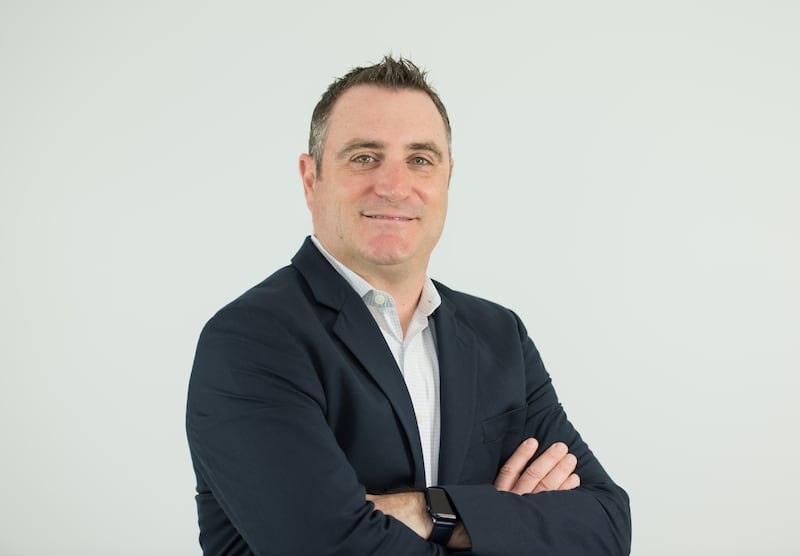Retrofits can significantly reduce a home’s environmental impact, enabling a more sustainable lifestyle. Yet, many people are hesitant to invest in large-scale projects due to the costs. So how do you future-proof your home in the most sustainable way possible, both for your wallet and the environment?
“Unlike simpler choices, to cut down on red meat or buy goods with recyclable packaging, retrofitting feels more complex,” says Chris Collins, country president Ireland at Schneider Electric.
But it may not be as challenging as people think, as Collins explains: “A sustainable home doesn’t always require a huge investment, nor need to be complicated. By incorporating small and connected digital solutions, homeowners can yield real energy savings and future-proof their homes.”
He points to smart lighting systems as a case in point. These automatically turn off lights when no one is home and turn them back on to light the path when someone returns. “These features not only save energy but also provide people with peace of mind, knowing that the home is secure and energy efficient even when they are away,” says Collins.
READ MORE

Changing to a smart and sustainable home starts with replacing the consumer unit – otherwise known as the fuse box or board – which controls the flow of electricity, preventing any overloads or short circuits.
“We’ve all had to flip the ‘trip switch’ at one time or another when the lights go out, or appliances stop working. Usually found in the hallway or under the stairs, older consumer units do not always have the capacity to support smart appliances, outdoor lighting, EV charging or even solar panels,” says Collins.
“This is why we always recommend investing in a modern unit capable of managing the additional load. A one-off investment today in a new unit will reap dividends in the years to come. It will enable you to integrate new smart home technology and appliances and reduce your dependency on the grid by switching to renewable energy. The modern units also offer greater protection from electrical faults, adding safety and reassurance.”
Once this new unit is in place, homeowners can then easily install tools such as smart thermostats and wireless energy sensors to better monitor their energy.
“With a simple energy sensor plugged into the electrical panel, homeowners can easily gain access to valuable information about their energy consumption – not just as a whole, but for individual appliances and devices in real time,” says Collins. “Here, they can see which appliances are the most energy intensive, need turning off or should be operated during offpeak hours, which can also help to reduce energy bills.”
A more advanced option to enhance sustainability and achieve a quick return on investment comes by installing energy-generating technology such as solar panels, which can even turn a retrofitted home into a steady source of income.
“As well as producing energy for their own use, homeowners have the possibility to feed any surplus energy back to the grid. They can also sell this back during peak times to maximise their returns,” he points out.
To absorb some of the cost burden of these sustainable investments, the Government has several incentives designed to encourage homeowners to retrofit their homes, including SEAI Grants, the Warmer Homes Scheme, and various tax incentives.
“These provide funding to make Irish homes more energy efficient through the deployment of insulation, heat pumps, solar panels, and heating controls,” says Collins.
“However, despite the Government’s best intentions, incentives alone are not enough to meet the target of half a million retrofitted homes by 2030. Many people would have been deterred from taking a loan due to the perceived maintenance costs and fearing a delayed return on investment. Unfortunately, this mindset isn’t going to change until homeowners, especially those on a lower income, can be sure an energy efficient home is worth the investment. After all, the promise of cheaper electricity sounds even more appealing if the installation costs are covered and this is something governments must bear in mind.”
The fact that Schneider Electric’s digital solutions for energy efficiency have helped commercial clients recover their investment in just two-and-a-half years, compared to the 12-year time frames which were typical previously, shows just what’s possible with energy transition.
Perhaps an easier analogy for domestic users is in relation to cars, however. “You could compare a retrofit to buying an EV – it’s a big investment upfront, but the long-term savings pay for the car and more,” says Collins.
“Ultimately, it’s our shared responsibility to create an environment where energy-efficient homes can be more self-sufficient. With support from consumers, governments and businesses alike, we must shift attitudes, highlight the financial benefits to be gained, and make technology accessible for homeowners to better manage their energy.”













